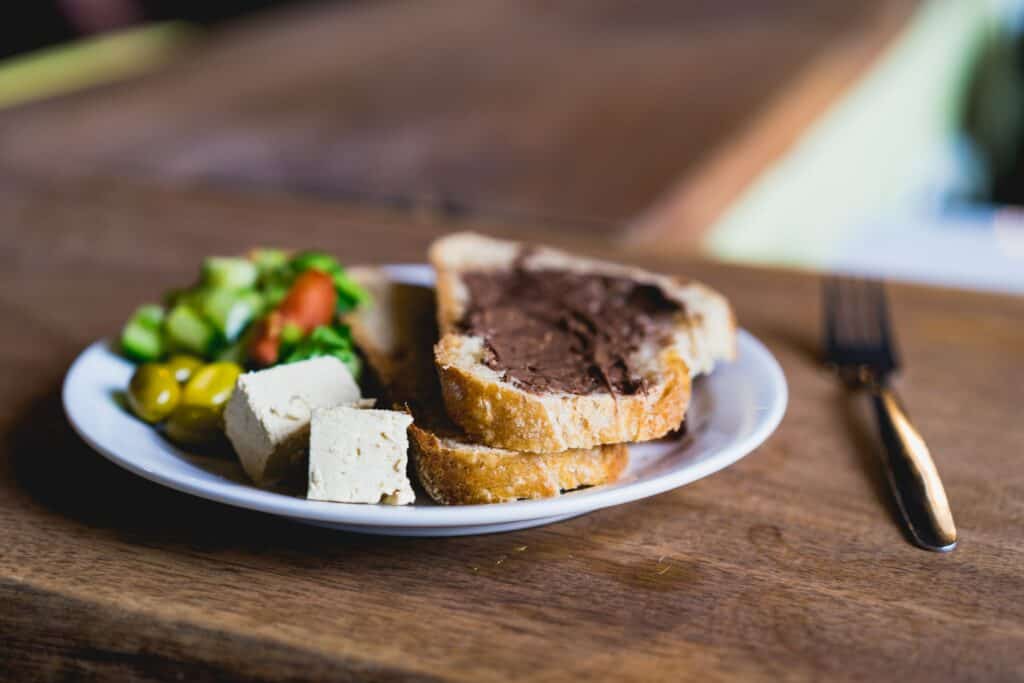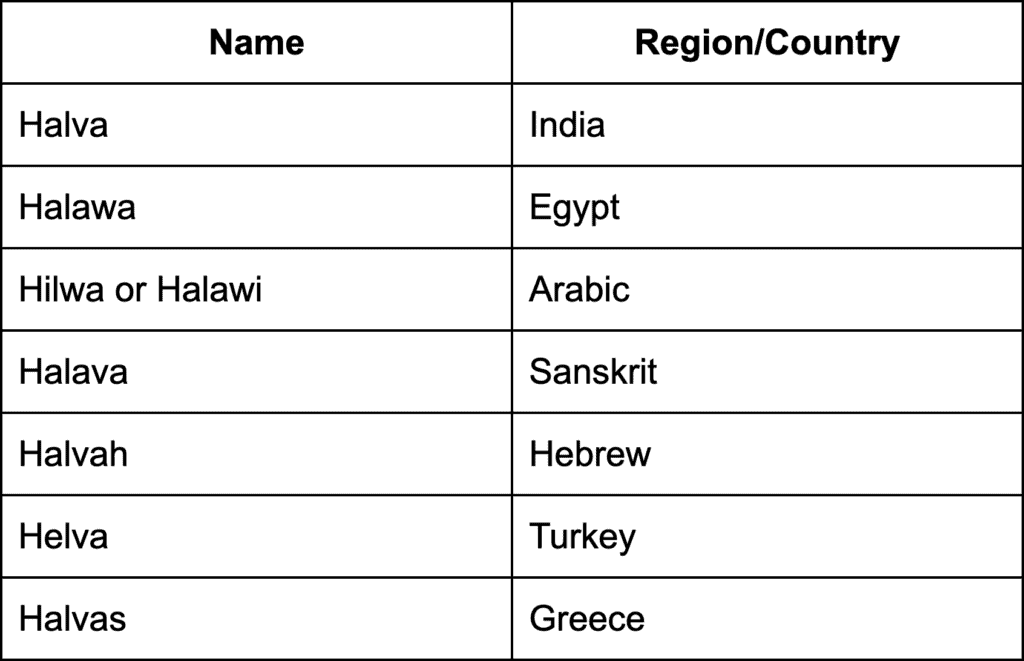
Halva is a Middle Eastern dessert made from sesame seed paste, sugar, spice, and nuts. You could compare it to fudge. Its crumbly, fluffy texture and semisweet, nutty taste make halva a unique, delightful treat. You can find it in many Middle Eastern grocers and street vendors. Or make one of these Mediterranean desserts yourself? See our recipe below.
Halva recipes differ from region to region, but tahini (sesame paste) is the star ingredient. Brew a cup of tea or coffee, and you have a weekend treat for the whole family.
What Is Halva Made From?
Making halva is quite simple and takes very little time. Cooks and regions differ in terms of their recipes, additives, and cooking styles. For instance, the Middle Eastern dessert varies slightly in the Turkish and Hebrew cultures. You have two ways to make halva:
1. The Flour-Based Mixture
The most commonly used flour in halva is semolina, a type of flour made of durum wheat. Unlike traditional flour for cooking, semolina is coarse. The coarseness changes when it is cooked to become soft and porridge-like. The yellow color of the semolina flour gives the treat its rich color.
2. A Base Of Groundnuts
Based on nuts, this version is crumbly inconsistent. Grinding sesame seeds or sunflower seeds into a paste is the first step. Since the seeds are so oily, the ground paste will only need a sugar syrup or honey to finish it. If you want to add flavor with additional toppings, use caramel, dark chocolate, rosewater, cardamom, hazelnuts, or pistachios.

Ingredients
- One and a half cups tahini
- One teaspoon vanilla extract
- One and a half cups sugar
- Half a cup of water
- Half a cup of pistachios—shelled and chopped
Instructions
- Apply a light coating of nonstick cooking spray to a loaf pan. Then lay parchment paper over it and set it aside.
- Put water and sugar into a small pot over low heat and let it simmer. With a spatula, stir the mixture to dissolve the sugar, about five minutes.
- While that’s happening, mix your tahini and vanilla extract in a heat-resistant bowl, then warm it over medium heat.
- Heat the mixture until it gets to 250°F on your candy thermometer. Then carefully pour the melted butter into the bowl of tahini. Stir vigorously to blend until the halva becomes glossy and sticky.
- Mix in pistachios.
- Add the batter to the loaf pan, smoothening the top. Cover with plastic wrap and refrigerate for 24hrs. If you want to slice halva, it’s best to do it when it’s cold, but serve it at room temperature.
Where Did It Come From?
Halva’s origins are subject to controversy. Some suggest that it originated in Turkey and spread to Lebanon and Syria. Then it spread to the Gulf States, Afghanistan and settled in India. According to some sources, Turkish emigrants, not the Ottomans, brought it to the Arab countries a century ago. Mughals brought it to India in the 16th century, according to a general consensus.
However, halva was first discovered around 3000 BC, according to food historians. This ancient treat has roots extending back thousands of years. Every region has its name, such as:

Halva’s origins can also be traced to the Ottoman Empire, according to some legends. Halva is the oldest dessert in Turkish cooking, according to Nevin Halici in the “Turkish Cookbook.”
Ashkenazi Jews adopted sesame tahini in Europe from Romanians in the Ottoman era. Early in the 20th century, this version crossed the Atlantic to America.
Turkish elites began hosting lavish dinners known as halva dinners in the 17th century. It was served at Helva dinners to interrupt conversations and discussions. Some parts of Anatolia still hold Helva dinners today. Halva has become a tradition throughout Turkey that symbolizes special occasions and life transitions—birth and death.
How Is Halva Served?
Serving it warm is ideal, but it will still taste good afterward. In case you want to warm it up again, you can use a pan.
- Sprinkle cinnamon over or add more nuts to it, shape it with two spoons while it is still hot, or scoop it out of the bowl with a scoop.
- Halva is good with nuts, legumes, and lentils. Sunflower seeds also heighten the taste of halva.
- Adding some vegetables to halvas for lunch will give it a healthier taste, rather than eating it solely as sugar. Veggies like pumpkins, carrots, and yams go just as well with unsweetened halva.
- In places such as Turkey, Somalia, Pakistan, and Iran, you can find Greek halvas that feature oil-fried semolina. You can enhance the halvas with sugar syrup. For an even better taste, you can top them with almonds and nuts.
What Goes Well With It?
Halva is undoubtedly one of the world’s most common desserts despite its ancient origins. Below are some suggestions for how to enjoy it.
Ice cream topping for sundaes
When you bite into a piece of halva, it feels like packed brown sugar that melts slowly in your mouth. Because of its unique texture, it makes an excellent ice cream topping. In contrast to ice cream, halva is crumbly, where ice cream is creamy and smooth, and firm and crunchy, where ice cream softens quickly. Together, it makes for a mouthwatering treat. No matter what other flavors you add, halva will keep its taste.
Brownies with Halva
Chef Yotam Ottolenghi, the new Israeli culinary craze creator, has developed a tahini brownie recipe that features halva pieces sprinkled throughout.
Halva and Chip Cookies, Anyone?
Halva tastes like toffee and peanut butter chips. The highly sugary, firm nature of tahini makes it a great nut butter substitute. In this classic Chocolate Chip Cookie recipe, you can use half the chocolate chips and instead use some halva to finish.
Creating a Halva Pie Crust
This gluten-free, sandy crust is an ideal foundation for a treacly pie.
During baking, use halva in place of the crackers, and bake for less time than the recipe states. You will have a perfect pie shell. Make your granola to add some nutrients to your diet. Adding halva at the same time as the cranberries will do the trick. We promise you’ll want more.
Join us in the heart of New York City to experience halva with our unique piquancy and flair.

